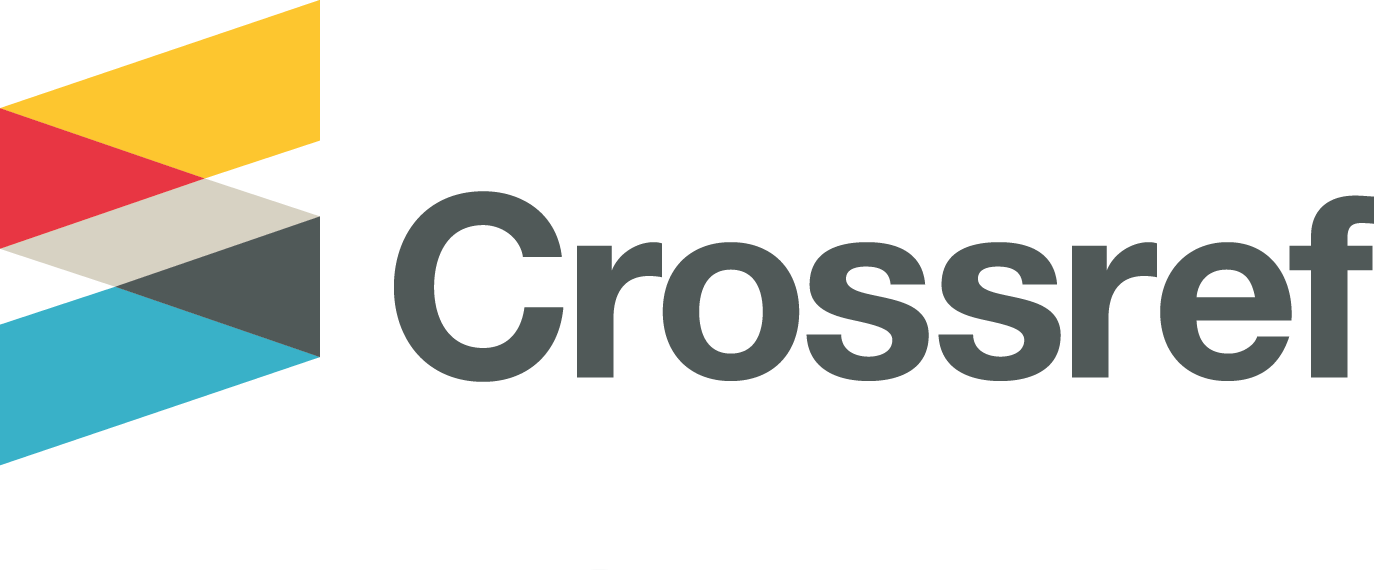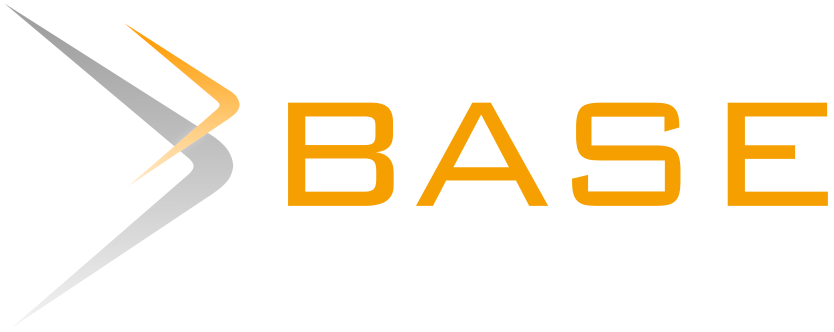Blended Learning: Innovation in College Classrooms for Deeper Student Engagement
Abstract
Kemajuan teknologi menuntut adaptasi dalam pendidikan. Blended learning yang menggabungkan metode belajar tatap muka dan daring dapat meningkatkan student engagement mahasiswa. Student engagement merupakan aspek penting yang perlu diperhatikan dalam proses belajar dan mengajar karena akan berpengaruh pada proses dan hasil belajar mahasiswa. Tujuan dari penelitian ini adalah menganalisis pengaruh penerapan metode blended learning terhadap peningkatan student engagement pada mahasiswa di perguruan tinggi. Hipotesis penelitian ini adalah metode blended learning mampu meningkatkan student engagement mahasiswa. Penelitian ini menggunakan pendekatan kuantitatif dengan desain cross-sectional. Data dikumpulkan melalui survei daring menggunakan kuesioner yang dibagikan kepada 179 mahasiswa aktif dari berbagai program studi yang pernah mengikuti pembelajaran blended learning dan berusia antara 18 hingga 22 tahun. Hasil penelitian menunjukkan bahwa blended learning berpengaruh positif dan signifikan terhadap student engagement (t = 8.121, p < .001). Persepsi terhadap blended learning memberikan kontribusi sebesar 26.7% terhadap student engagement (Adjusted R² = 0.267). Hasil yang diperoleh dari penelitian ini adalah penerapan metode blended learning dapat meningkatkan student engagement mahasiswa di tingkat perguruan tinggi. Implikasi penelitian ini adalah penerapan blended learning dapat menciptakan pengalaman belajar yang lebih fleksibel dan mudah diakses, memungkinkan mahasiswa untuk menyesuaikan proses belajar dengan kebutuhan dan kecepatan masing-masing. Hal ini memberikan dampak positif bagi ketelibatan belajar mereka.
Keywords
Full Text:
FULL TEXTReferences
Adams, D., Sumintono, B., Mohamed, A., & Mohamad Noor, N. S. (2018). E-learning readiness among students of diverse backgrounds in a leading Malaysian higher education institution. Malaysian Journal of Learning and Instruction, 15(2), 227–256. https://doi.org/10.32890/mjli2018.15.2.9.
Adams, D., Mabel, H. J. T., Sumintono, B., & Oh, S. P. (2020). Blended learning engagement in higher education institutions: A differential item functioning analysis of students’ backgrounds. Malaysian Journal of Learning & Instruction, 17(1), 133-158. https://doi.org/10.32890/mjli2020.17.1.6
Agustina, M. T., & Amaliyah, S. (2023). Student engagement di era blended learning. Jurnal Pendidikan dan Konseling (JPDK), 5(1), 5608–5612. https://doi.org/10.31004/jpdk.v5i1.11972
Aini, S. A., & Ciptaningrum, D. S. (2024). Exploring students’ engagement in blended learning. Britain International of Linguistics, Arts and Education Sciences Journal, 6(2). https://doi.org/10.33258/biolae.v6i2.1080
Alabbasi, D. (2022). Factors influencing students' engagement in virtual classrooms and their impact on satisfaction. Information Sciences Letters, 11(4), 1203–1215. https://doi.org/10.18576/isl/110420.
Andriani, Yusna, Ramadona, Y., Estiningtias, E. P., & Satriani, A. (2023). Interaksi guru dan siswa: Analisis mendalam terhadap kurangnya motivasi belajar di kelas akibat metode pengajaran tradisional. PIJAR: Jurnal Pendidikan Dan Pengajaran, 1(3). https://doi.org/10.58540/pijar.v1i3.496.
Anthony, B., Kamaludin, A., Romli, A., Raffei, A. F. M., Nincarean A/L Eh Phon, D., Abdullah, A., ... & Baba, S. (2019). Exploring the role of blended learning for teaching and learning effectiveness in institutions of higher learning: An empirical investigation. Education and Information Technologies, 24, 3433-3466. https://doi.org/10.1007/s10639-019-09941-z.
Agustina, M. T., & Amaliyah, S. (2023). Student engagement di era blended learning. Jurnal Pendidikan dan Konseling (JPDK), 5(1), 5608-5612. https://doi.org/10.31004/jpdk.v5i1.11972.
Agustina, M. T., & Widyastika, A. R. (2022). Blended learning dengan motivasi belajar mahasiswa Universitas Nasional Karangturi pada masa pandemi covid-19. Psikoborneo: Jurnal Ilmiah Psikologi, 10(3), 620. http://dx.doi.org/10.30872/psikoborneo.v10i3.8585.
Arifin, M., & Abduh, M. (2021). Peningkatan motivasi belajar model pembelajaran blended learning. Jurnal Basicedu, 5(4), 2339-2347.
Azwar, S. (2012). Reliabilitas dan Validitas. Pustaka Pelajar.
Banihashem, S. K., Noroozi, O., den Brok, P., Biemans, H. J., & Kerman, N. T. (2023). Modeling teachers' and students’ attitudes, emotions, and perceptions in blended education: Towards post-pandemic education. The International Journal of Management Education, 21(2), 100803. https://doi.org/0.1016/j.ijme.2023.100803.
Bhagat, K. K., Cheng, C. H., Koneru, I., Fook, F. S., & Chang, C. Y. (2023). Students’ Blended Learning Course Experience Scale (BLCES): development and validation. Interactive Learning Environments, 31(6), 3971-3981. https://doi.org/10.1080/10494820.2021.1946566.
Christanty, Z. J., & Cendana, W. (2021). Upaya guru meningkatkan keterlibatan siswa kelas K1 dalam pembelajaran synchronous. COLLASE (Creative of Learning Students Elementary Education), 4(3). https://doi.org/10.22460/collase.v4i3.7154
Chiu, T. K. (2021). Digital support for student engagement in blended learning based on self-determination theory. Computers in Human Behavior, 124, 106909. https://doi.org/10.1016/j.chb.2021.106909.
Diastama, C., & Dewi, D. K. (2021). HUBUNGAN ANTARA STUDENT ENGAGEMENT DENGAN MOTIVASI BELAJAR SELAMA PEMBELAJARAN JARAK JAUH SISWA SMA X. Character Jurnal Penelitian Psikologi, 8(6), 127–136. https://doi.org/10.26740/cjpp.v8i6.41522.
Ernawati, L., Kurniasari, N. I., & Ayu Ningrum, D. S. (2022). PENGARUH SCHOOL WELLBEING TERHADAP STUDENT ENGAGEMENT. Quanta : Jurnal Kajian Bimbingan Dan Konseling Dalam Pendidikan, 6(1), 24–29. https://doi.org/10.22460/q.v6i1p8-16.2929.
Etikan, I. (2016). Comparison of Convenience Sampling and Purposive Sampling. American Journal of Theoretical and Applied Statistics, 5(1), 1. https://doi.org/10.11648/j.ajtas.20160501.11
Fikrie, & Ariani, L. (2019). Keterlibatan siswa (student engagement) di sekolah sebagai salah satu upaya peningkatan keberhasilan siswa di sekolah. In Prosiding Seminar Nasional & Call Paper, Banjarmasin (Vol. 13, pp. 103-110).
Hariono, E. A. D., & Yoenanto, N. H. (2024). Upaya meningkatkan student engagement pada pembelajaran daring. Jurnal Pendidikan dan Pembelajaran Indonesia (JPPI), 4(4), 1459–1474. https://doi.org/10.53299/jppi.v4i4.783
Haryanto, A. T. (2024, January). APJII: Jumlah Pengguna Internet Indonesia Tembus 221 Juta Orang. Detikinet. https://inet.detik.com/cyberlife/d-7169749/apjii-jumlah-pengguna-internet-indonesia-tembus-221-juta-orang.
Haryono, S., & Darmadi, R. (2022). Pengaruh efikasi diri dan student engagement dalam blended learning terhadap kepuasan belajar mahasiswa perguruan tinggi vokasi pariwisata di Jakarta. EDUTURISMA, 6(2).
Heilporn, G., Lakhal, S., & Bélisle, M. (2021). An examination of teachers’ strategies to foster student engagement in blended learning in higher education. International journal of educational technology in higher education, 18(1), 25. https://doi.org/10.1186/s41239-021-00260-3.
Hidayati, R. N., Wahyuningsih, B. D., Hariyono, R., & Musadek, A. (2023). Learning outcomes in blended learning implementation. Journal of Scientific Research, Education, and Technology (JSRET), 2(3), 1095-1102. https://doi.org/10.58526/jsret.v2i3.201.
Joshi, D., Zalte, S. M., Sridhar, Robin Johny, K., & Mahajan, D. A. (2023). The impact of blended learning on student engagement in the digital era. European Chemical Bulletin. https://doi.org/10.48047/ecb/2023.12.si12.063.
Kishorchandra, P. V., Monani, D., Aahuja, D., & Chotai, U. (2024). Traditional vs. modern education: A comparative analysis. International Journal of Research and Analytical Reviews, 11(2). https://dx.doi.org/10.2139/ssrn.4876084.
Kumar, A., Krishnamurthi, R., Bhatia, S., Kaushik, K., Ahuja, N. J., Nayyar, A., & Masud, M. (2021). Blended learning tools and practices: A comprehensive analysis. Ieee Access, 9, 85151-85197. https://doi.org/10.1109/ACCESS.2021.3085844.
Ma, L., & Lee, C. S. (2021). Evaluating the effectiveness of blended learning using the ARCS model. Journal of computer assisted learning, 37(5), 1397-1408. https://doi.org/10.1111/jcal.12579.
Machumu, H., Zhu, C., & Almasi, M. (2018). Students’ motivational factors and engagement strategies in constructivist-based blended learning environments. Afrika Focus, 31(1), 13–34. https://doi.org/10.21825/af.v31i1.9029.
Mahsum, E. S., Baharum, A., & Yahya, F. (2021). A preliminary study on identifying the level of student engagement in blended learning. In Proceedings of the International Invention, Innovative & Creative (InIIC) Conference, Series 1/2021 (26-30)
Murphy, L., Eduljee, N. B., & Croteau, K. (2021). Teacher-centered versus student-centered teaching: Preferences and differences across academic majors. Journal of Effective teaching in Higher education, 4(1), 18-39. https://doi.org/10.36021/jethe.v4i1.156.
Radovan, M., Meden, E., Radovan, D. M. 2024. The Predictive Power of Teaching Approaches: Unveiling Keys to Enhanced Students' Motivation and Workload in Blended Learning. Ubiquity Proceedings, 4(1): 26. https://doi.org/10.5334/uproc.148.
Rahimah, H., Mufdlilah, M., & Hakimi, M. (2024). Efektifitas metode blended learning dalam proses pembelajaran mahasiswa kesehatan: A scooping review. Midwifery Journal: Jurnal Kebidanan UM. Mataram, 7(1), 10-19.
Rochana, R., Darajatun, R. M., & Ramdhany, M. A. (2021). Pengaruh implementasi kebijakan kampus merdeka terhadap minat dan keterlibatan mahasiswa. Journal of Business Management Education (JBME), 6(3), 11-21.
Salsabila, U. H., Insani, A. P. S., Mustofa, H., Kalma, M. E. Z., & Wibisono, M. I. (2023). Teknologi pendidikan: Pemanfaatan teknologi dalam pendidikan pasca pandemi. Jurnal Dimensi Pendidikan Dan Pembelajaran, 11(1), 79-88. https://doi.org/10.24269/dpp.v11i1.6173.
Schreiner, L.A. (2008). Measuring Engaged Learning in College Students: Beyond the Borders of NSSE.
Shantakumari, N. (2014). A Study of Student's Perceptions of Blended Learning in certificate courses of Gulf Medical University. GULF MEDICAL JOURNAL.
Utami, I. S. (2017). Pengujian validitas model blended learning di sekolah menengah kejuruan. VOLT: Jurnal Ilmiah Pendidikan Teknik Elektro, 2(1), 1–10. https://doi.org/10.30870/volt.v2i1.963.
Werdiningsih, R., Wirasati, W., & Bahrudin, A. (2024). Blended learning 4.0: Memadukan keunggulan pembelajaran digital dan konvensional dalam mempersiapkan talent global. In SEMINAR NASIONAL KONSORSIUM UNTAG SE INDONESIA (pp. 427-437).
Wiwik Juwarini Prihastiwi, Endang Prastuti, and Nur Eva, (2020), “E-Learning Readiness and Learning Engagement during the Covid-19 Pandemic” in International Conference of Psychology, KnE Social Sciences, pages 244–253. https://doi.org/10.18502/kss.v4i15.8212.
Wu, L., & Gopez, J. M. W. (2024). A review of academic motivation and student engagement in blended learning within the Chinese educational context. International Journal for Multidisciplinary Research, 6(5). https://doi.org/10.36948/ijfmr.2024.v06i05.29631.
DOI: http://dx.doi.org/10.30872/psikoborneo.v13i2.19644
Refbacks
- There are currently no refbacks.
Copyright (c) 2025 Meilani Sandjaja

This work is licensed under a Creative Commons Attribution-ShareAlike 4.0 International License.
PSIKOBORNEO: Jurnal Ilmiah Psikologi Published by Faculty of Social and Political Siences, University of Mulawarman, Samarinda, East Kalimantan and This work is licensed under a Creative Commons Attribution-ShareAlike 4.0 International License.
________________________________________
PSIKOBORNEO: Jurnal Ilmiah Psikologi
Department of Psychology
Faculty of Social and Political Siences, University of Mulawarman
Jl. Muara Muntai Kampus Gn. Kelua Samarinda 75411
Phone: +62 813 35350368
E-Mail: psikoborneo@gmail.com / psikoborneo@fisip.unmul.ac.id
















